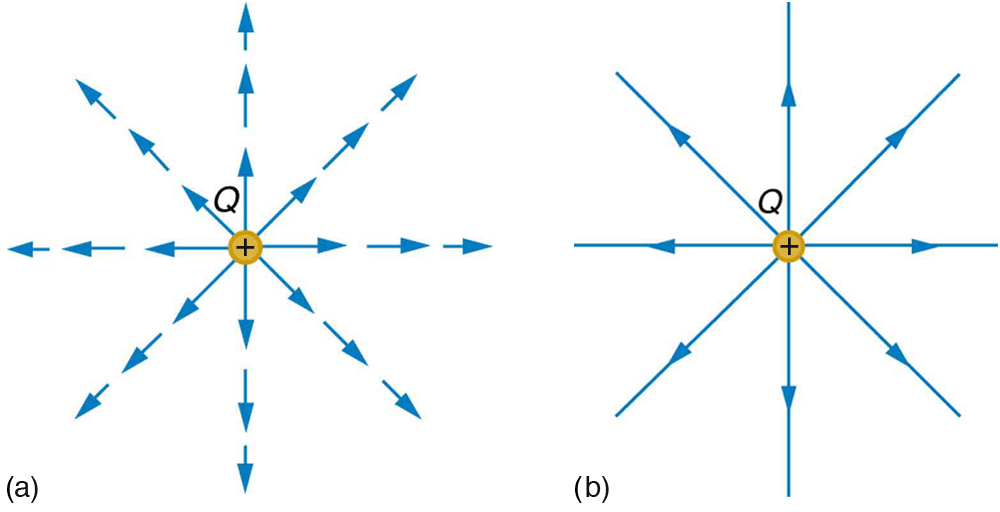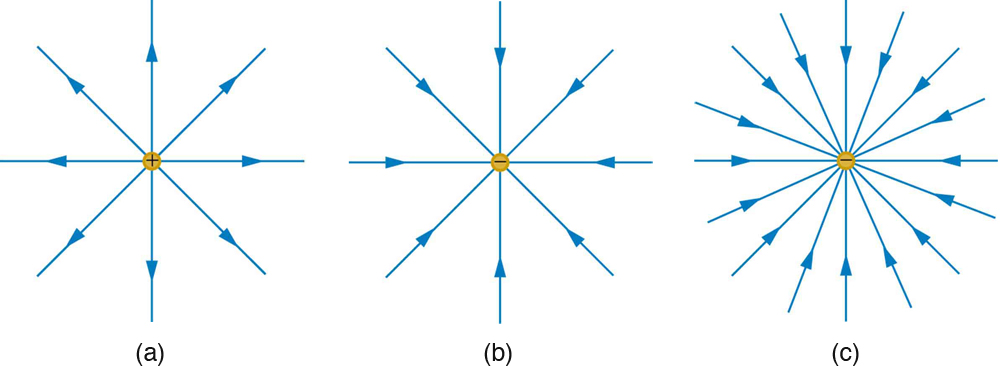| << Chapter < Page | Chapter >> Page > |
Drawings using lines to represent electric fields around charged objects are very useful in visualizing field strength and direction. Since the electric field has both magnitude and direction, it is a vector. Like all vectors , the electric field can be represented by an arrow that has length proportional to its magnitude and that points in the correct direction. (We have used arrows extensively to represent force vectors, for example.)
[link] shows two pictorial representations of the same electric field created by a positive point charge . [link] (b) shows the standard representation using continuous lines. [link] (b) shows numerous individual arrows with each arrow representing the force on a test charge . Field lines are essentially a map of infinitesimal force vectors.

Note that the electric field is defined for a positive test charge , so that the field lines point away from a positive charge and toward a negative charge. (See [link] .) The electric field strength is exactly proportional to the number of field lines per unit area, since the magnitude of the electric field for a point charge is and area is proportional to . This pictorial representation, in which field lines represent the direction and their closeness (that is, their areal density or the number of lines crossing a unit area) represents strength, is used for all fields: electrostatic, gravitational, magnetic, and others.

In many situations, there are multiple charges. The total electric field created by multiple charges is the vector sum of the individual fields created by each charge.
[link] shows how the electric field from two point charges can be drawn by finding the total field at representative points and drawing electric field lines consistent with those points. While the electric fields from multiple charges are more complex than those of single charges, some simple features are easily noticed.
For example, the field is weaker between like charges, as shown by the lines being farther apart in that region. (This is because the fields from each charge exert opposing forces on any charge placed between them.) (See [link] and [link] (a).) Furthermore, at a great distance from two like charges, the field becomes identical to the field from a single, larger charge.

Notification Switch
Would you like to follow the 'Concepts of physics with linear momentum' conversation and receive update notifications?